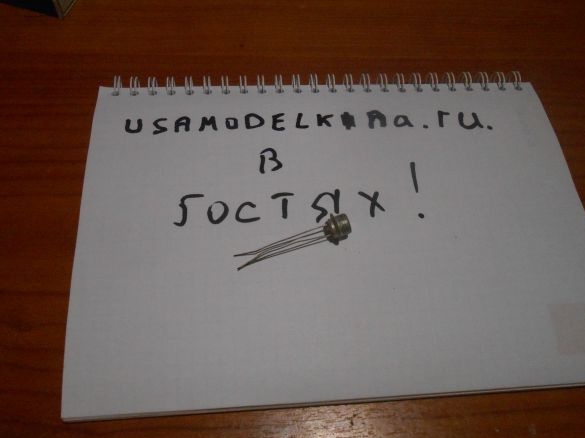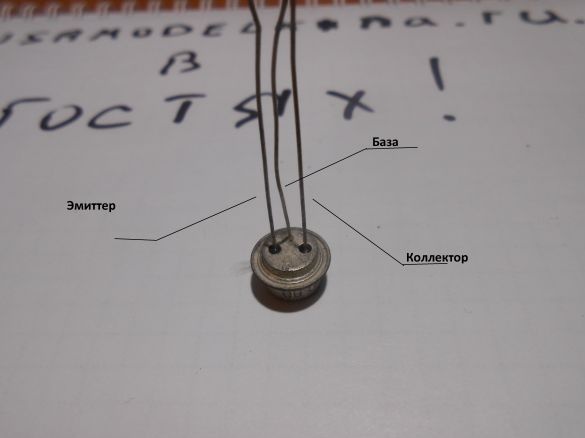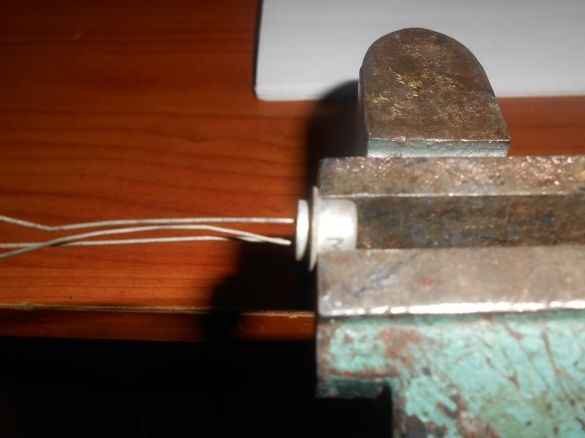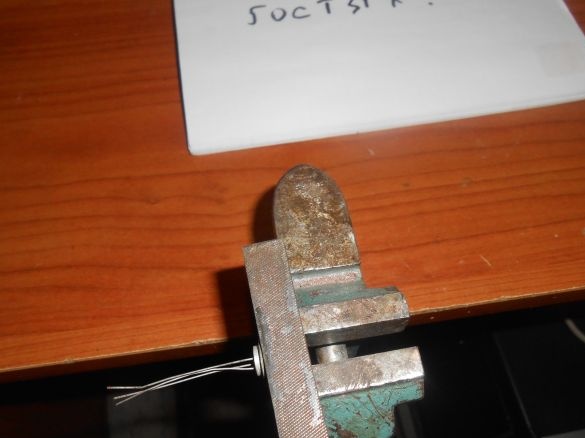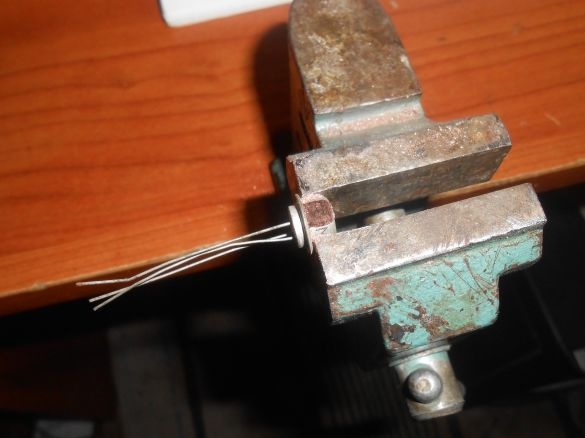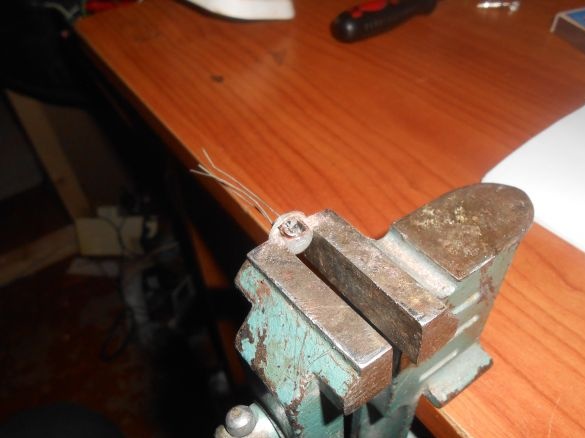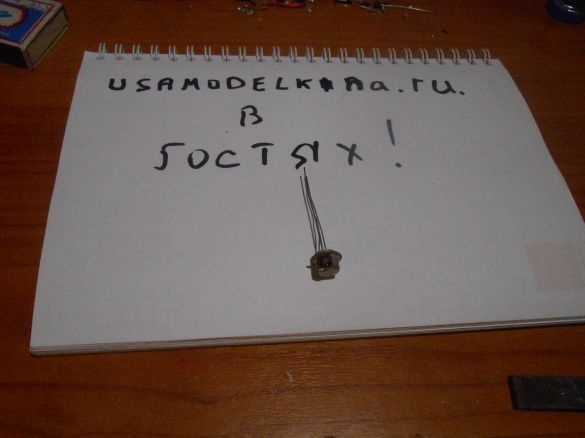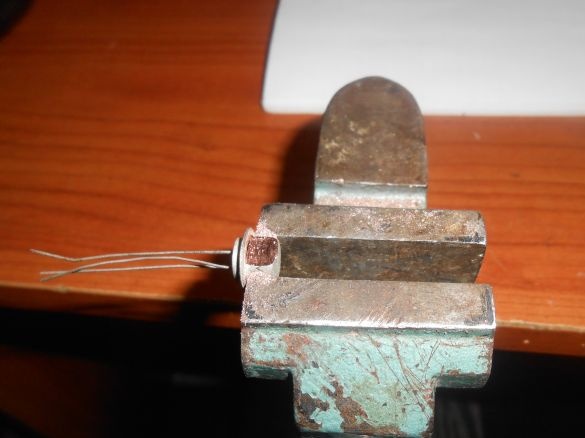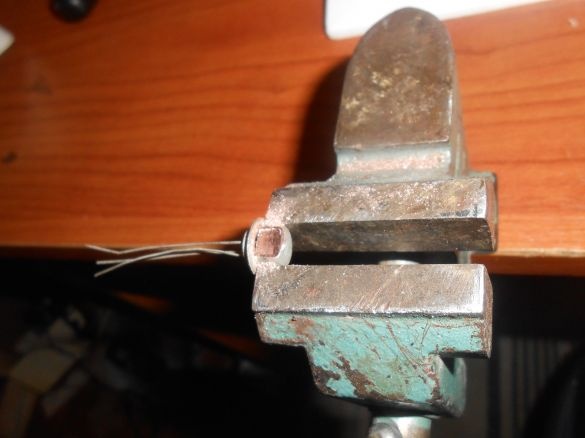I found a simple photo relay circuit to make a wall clock with backlight, the night comes in the clock, the LED lights up, but I did not find a phototransistor, it happens that I want to, but no ....
I decided to make it myself from the Soviet transistor MP42.
We study the material base.
A phototransistor is a semiconductor device that converts optical radiation into an electrical signal and at the same time amplifies it. The collector current at the transistor depends on the radiation intensity. The collector current is greater, the more intense the light enters the base zone of the phototransistor.
Two modes of operation of the phototransistor:
Floating base mode. Only the output of the emitter and the output of the collector work.
Transistor mode with a source of bias of the base circuit. All three pins work plus a resistor on the base pin.
Errors in the manufacture of a phototransistor from mp42.
Never cut the lid on top! This will lead to an inevitable shift of the crystal holder and spoilage of the crystal or a break in the lead-in conductors. It will lead to 100% flash in the manufacture of a phototransistor. Even if you successfully cut away the light will not fall on the base zone of the crystal!
Do not cut off the base output of the phototransistor, as there are circuits that use this particular output.
Do not fill the window of the phototransistor with anything. Thermal damage to the crystal will occur.
Let's start the production of a phototransistor. Like all transistors, the MP 42 has three outputs: Base-Collector-Emitter.
If the transistor is turned upside down and the base is set to itself, then to the left is the Emitter, to the right the Collector.
Clamp in a vise
We take a file
We cut off on the output of the emitter
There was a hole, carefully remove the foil with a needle
The phototransistor is ready, we use it!


